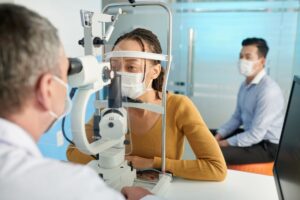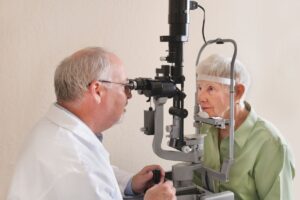Get Ocular Health Exams in Edmonton
At Optometrists’ Clinic Inc., we prioritize ocular health as a key component of your overall well-being. Your eyes are not just windows to the world—they are also indicators of underlying health conditions. Whether you need a routine check-up or are experiencing vision concerns, ocular health exams can help detect issues early!
Frequently Asked Questions
What is Ocular Health?
Ocular health refers to the overall well-being of your eyes, optic nerves, and vision function. A person with good ocular health has clear vision, healthy eye structures, and no signs of disease or damage. Maintaining ocular health is essential for preserving eyesight and detecting potential vision-threatening conditions like:
- Glaucoma
- Macular degeneration
- Cataracts
- Diabetic retinopathy
- Dry eye syndrome
- Corneal diseases
At Optometrists’ Clinic Inc. in Edmonton, our ocular health exams go beyond basic vision testing to assess your eye health in detail and catch potential issues before symptoms appear!
Why Should I Have My Ocular Health Checked?
Your eyes can reveal a lot about your overall health. Regular ocular health exams are crucial because many eye diseases develop slowly and without noticeable symptoms. By the time you experience vision loss, the damage may already be irreversible.
A comprehensive ocular health exam in Edmonton can:
- Detect early signs of eye diseases before they cause serious damage.
- Identify underlying health conditions such as diabetes, high blood pressure, or autoimmune diseases.
- Prevent vision loss through early intervention and treatment.
- Ensure your prescription is up to date for clear and comfortable vision.
For adults over 40, individuals with diabetes, high blood pressure, or a family history of eye disease, annual ocular health exams are strongly recommended.
Who is Covered for Eye Exams in Alberta?
In Alberta, certain individuals qualify for covered eye exams under Alberta Health Care Insurance Plan (AHCIP), including:
- Children (0-18 years old): One fully covered comprehensive eye exam per year.
- Seniors (65+ years old): One fully covered comprehensive eye exam per year.
- Medical Emergencies (all ages): Alberta Health covers medically necessary ocular exams for conditions like eye infections, foreign object removal, sudden vision loss, and eye injuries.
Adults (19-64 years old) are not covered for routine eye exams under AHCIP but may have coverage through private health insurance, employer benefits, or personal extended health plans.
If you’re unsure about your coverage, our team at Optometrists’ Clinic Inc. in Edmonton can help you navigate your benefits and find the best options for your ocular health exam.
What’s the Difference Between a Vision Exam and an Ocular Health Exam?
A vision exam primarily checks how well you can see and whether you need glasses or contact lenses. It focuses on visual acuity and updating your prescription if necessary.
An ocular health exam, on the other hand, goes beyond just checking your vision. It involves a comprehensive evaluation of your eye structures, including the retina, optic nerve, and cornea, to detect and monitor eye diseases like glaucoma, macular degeneration, cataracts, and diabetic retinopathy.
If you’re looking for thorough eye care in Edmonton, an ocular health exam ensures that both your vision and eye health are properly assessed!
Learn More About Eye Exams

Understanding the Latest Advances in LASIK Eye Surgery
First implemented in the 1980s, LASIK surgery has since been regarded as an effective permanent vision correction solution for those with sight problems. However, it was not until recently that

What Eye Exams and Services Are Covered by Alberta Health Care?
When it comes to eye care, making sure you are scheduling regular eye exams is fundamental for the early detection of eye-related conditions. Are you wondering if eye exams are covered

How Often Do Seniors Need to Schedule an Eye Exam?
You read your books, you watch your films, you drive around your city and you find yourself breezing through your daily routines. From what you can tell, there’s nothing noticeably
Book your eye exam with The Optometrists' Clinic today!
We invite you to get in touch, so that we can support you & give you the tools and knowledge you need to care for or improve your vision!




